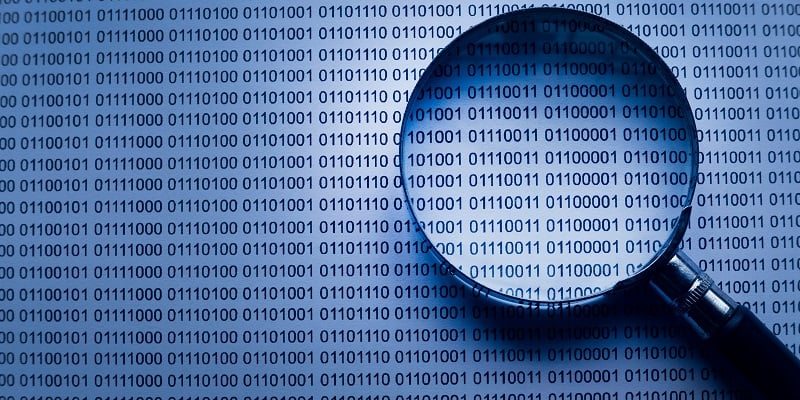In marketing and analytics, a dataset is so much more than a sequence of numbers, it's the foundation on which campaigns are planned, budgets are determined, and performance is evaluated. But, just as a missing piece of a puzzle will distort the picture, incomplete data can render even the most sophisticated analysis meaningless.
With critical data points missing, marketers are forced to manage with partial visibility. Reports no longer reconcile with source systems, dashboards tell contradictory stories, and decisions are made with uncertainty. The result is not only inefficiency but also strategic risk: budgets can be wasted, performance can be misread, and opportunities can be missed. According to Gartner, poor data quality costs organizations at least $12.9 million a year.
This is the reason why data completeness has emerged as an inviolable tenet of modern analytics. Beyond a mere technical checkpoint, completeness serves as a safeguard that underpins each data-driven decision.
What is data completeness?
Data completeness is defined as the degree to which all expected and required data points are captured and present for analysis. A dataset is complete when there are no key records missing and all the data elements necessary for decision-making are present.
In marketing, this typically means ensuring that all significant campaign metrics, such as impressions, clicks, conversions, cost-per-click, and spend, are accurately recorded across all platforms. For example, if a campaign is running on Google Ads, Facebook, and Instagram, completeness ensures that impressions from all three platforms are included, not just one or two.
Without this end-to-end view, marketers risk evaluating campaign success against flawed assumptions. An incomplete dataset can lead to overestimating ROI, misallocating spend, or faulty assumptions regarding channel performance. Completeness guarantees marketers a view of the entire playing field rather than just a portion of it.
Why Marketers Need Completeness
Data trust is the cornerstone of any data-driven organization. When dashboards don't reconcile to source numbers or reports contain unexplained gaps, confidence collapses. Once lost, trust is difficult to restore, causing decision-makers to avoid analytics; a dangerous step backward in a world where speed and accuracy often determine competitive advantage. Our own research found that a staggering 34% of CMOs don’t trust their marketing data.
For marketing organizations, the consequences of incomplete data can be severe:
- Misguided strategy - Campaign optimizations based on partial inputs have a tendency to double down on the wrong tactics.
- Squandered budget - Advertisement budget can be incorrectly invested in channels that appear to be performing but aren't.
- Brand risk - Inaccurate reporting can establish unrealistic performance expectations, and it damages credibility with stakeholders.
Complete datasets, on the other hand, enable accurate attribution, reliable performance analysis, and more confident forecasting. Simply put: without completeness, there can be no trustworthy foundation for analysis.
Data Completeness vs. Accuracy vs. Consistency
Completeness is only one dimension of data quality, though it is often confused with related concepts such as accuracy and consistency. Each has a different function:
Data Completeness
Ensures no required data points are missing. Example: all campaign impressions are recorded.
Data Accuracy
Ensures the data truly represents real-world values. Example: impression count recorded is identical to the actual quantity served.
Data Consistency
Ensures consistency across systems and platforms. Example: ad spend amounts align between Google Ads, internal dashboards, and financial systems.
Together, these dimensions form a framework for trustworthy data. Completeness ensures no blind spots, accuracy ensures no distortions, and consistency ensures no contradictions.
What is a Data Completeness Check?
A data completeness check is a verification step that guarantees that all anticipated data has been successfully moved from the source systems to the target environment. Think of it as a gatekeeper in the data pipeline that guarantees that no record gets lost along the way.
Completeness checks typically monitor the following stages:
- Extracting data from third-party sources via APIs.
- Checking format and schema compliance.
- Cleaning and filtering records.
- Adding extra information to the data.
- Standardizing data from different sources to a common format.
- Warehousing data.
- Getting the data from the warehouse to display in the target system.
If any part of this fails, gaps may arise. A completeness check identifies such gaps early, enabling teams to resolve issues before they distort reports or dashboards.
 Incompleteness can erode trust in your data.
Incompleteness can erode trust in your data.How Completeness Checks Work
Completeness checks function much like an automated assistant that is perpetually verifying whether every data movement task was successful. When there is a fault, the system:
- Records the nature of the issue.
- Notifies the respective owner.
- Suggests potential solutions (e.g. re-authorizing a lost data source).
By proactively identifying and addressing gaps, completeness checks guarantee data pipeline integrity. Instead of learning about missing data days later in a performance review, teams receive notifications immediately, preserving trust in reporting.
Challenges in Sustaining Completeness
In complex data ecosystems, completeness can be challenging. Disparate tools, fragmented pipelines, and manual oversight offer plenty of chances for failure. Typical pain points include:
- Source-to-ETL issues - APIs fail or formats don't match, causing incomplete extraction.
- ETL-to-storage issues - Network outages or schema mismatches leave records behind.
- Transformation to Visualization - If your transformation tools don’t fully sync with your visualization platform, you risk incomplete dashboards that misrepresent the data. This affects decision-making accuracy.
- Storage Sync with Transformation Tools: Transforming data after storage can create inconsistencies if sync delays or schema changes aren't handled properly. Some records might be transformed, while others remain unprocessed, leading to discrepancies in the dataset.
Each breakdown not only lowers completeness, but also necessitates manual intervention to identify and rectify. Without automation, completeness can be error-prone and expensive to sustain.
 Data profiling can reveal data anomalies.
Data profiling can reveal data anomalies.Best Practices for Ensuring Completeness
There are a number of techniques and technologies that organizations can use to strengthen completeness checks and protect data quality:
- Statistical Analysis - Use statistical techniques to identify anomalies, missing values, or unusual variance that signal incomplete data.
- Data Profiling - Routinely analyze data structures and distributions to uncover patterns of missing or duplicate records.
- Automated Quality Tools - Leverage software solutions that continuously monitor pipelines, flag gaps, and provide lineage visibility.
- Cross-Validation - Confirm subsets of data between systems by comparing them for consistency and missing values.
- Sampling and Review - Manual review can provide an additional safeguard for smaller or critical datasets.
Using such platforms significantly mitigates the risk of data loss, offering a cohesive and dependable data management approach.
How to Measure Data Completeness
To be measured, completeness requires clear metrics. Common approaches include:
- Completeness Ratio - Percentage of complete records in a dataset.
- Missing Data Percentage - Proportion of empty or null fields.
- Completeness by Source - It allows organizations to identify which data providers or channels are more reliable in delivering complete data.
- Completeness Over Time - Organizations can create time-series charts to visualize how data completeness evolves and take proactive steps to address any declining trends.
- Completeness by Data Type - This metric categorizes data completeness by data type (e.g. text, numeric, categorical), helping organizations focus their efforts on improving the completeness of critical data types.
- Data Entry Completeness - Checking whether mandatory fields in forms or CRM input are filled.
- Data Completeness Scores - Some organizations create composite scores that weigh different completeness metrics based on their importance. This score provides an overall assessment of data completeness and can be used for benchmarking and goal-setting.
By implementing these methods and metrics, organizations can systematically validate data completeness and maintain high-quality data that supports accurate decision-making and analytics.
Conclusion
In a recent article, PWC state that relying on poor data quality, “can lead to compliance issues, uninformed decision-making and financial loss.” This highlights how completeness, as one of the core elements of data quality, plays a pivotal role in protecting organizations from such risks.
Data completeness is more than just a technical detail, it's a prerequisite for credible, actionable insights. Without it, analysis is skewed, strategies lose direction, and trust in analytics diminishes.
For marketers, the stakes are especially high. Budgets, brand reputation, and growth strategies all ride on the integrity of campaign data. By implementing rigorous completeness checks, adopting automated monitoring tools, and measuring with meticulously defined metrics, businesses can create a safeguard that ensures data-driven decisions are accurate and dependable.
When every penny is scrutinized and every decision must be justified, completeness is not an option. It's the foundation on which good analytics, and ultimately business success, is built.




.png)







